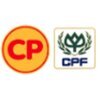Filter interviews by
National Dairy Development Board Interview Questions and Answers
National Dairy Development Board Interview Experiences
3 interviews found

(2 Questions)
- Q1. DNA extraction procedures
- Ans.
DNA extraction procedures involve breaking open cells, separating DNA from other cellular components, and purifying the DNA.
The first step is to break open the cells using mechanical or chemical methods.
The DNA is then separated from other cellular components such as proteins and RNA.
The DNA is purified using various techniques such as ethanol precipitation or column chromatography.
The quality and quantity of the extra...
- Q2. Past experience about projects
Interview Preparation Tips
Senior Office Executive Interview Questions asked at other Companies
I applied via Campus Placement and was interviewed before Mar 2022. There were 3 interview rounds.

It includes questions from management studies
(2 Questions)
- Q1. Tell me something about your self
- Q2. What is cooperative and three tier structure
- Ans.
Cooperative is a business model where members work together for mutual benefit. Three-tier structure refers to the three levels of cooperatives.
Cooperative is owned and operated by its members
Members work together to achieve common goals
Three-tier structure includes primary, secondary, and tertiary cooperatives
Primary cooperatives are owned by individual members
Secondary cooperatives are owned by primary cooperatives
Te...
Interview Preparation Tips
Deputy Manager Interview Questions asked at other Companies
I applied via Referral and was interviewed before Mar 2020. There was 1 interview round.
Interview Questionnaire
1 Question
- Q1. Microbiological assays, HPLC, chromatography, lDNA isolation and extraction techniques, cell culture basics, about yourself.
Interview Preparation Tips
Top trending discussions






Interview questions from similar companies

I applied via Referral and was interviewed in Aug 2024. There was 1 interview round.
Market sale distribution

I applied via Approached by company and was interviewed before Feb 2021. There were 2 interview rounds.

(1 Question)
- Q1. Related to my job profile.
Interview Preparation Tips

I applied via Campus Placement and was interviewed in Apr 2021. There were 3 interview rounds.
Interview Questionnaire
2 Questions
- Q1. They just asked about the current events which is happening in that moment and some basic technical questions
- Q2. Before you entering the interview room it's better to have a knowledge of current events, when I interviewed they asked MSP (minimum selling price) and farmers protest against the new APMC Act. And some te...
Interview Preparation Tips

I applied via Company Website and was interviewed in Mar 2023. There were 3 interview rounds.

(1 Question)
- Q1. Technical details related to Instrumentation, Electrical , plc, vfd
(1 Question)
- Q1. Discussed regarding company and salary
Interview Preparation Tips

I applied via Recruitment Consulltant and was interviewed before May 2021. There were 2 interview rounds.

(1 Question)
- Q1. Technical background
Interview Preparation Tips

Junior Sales Officer Interview Questions & Answers
G. D. Foods MFG (TOPS)posted on 8 Sep 2022
I applied via Naukri.com and was interviewed before Sep 2021. There were 2 interview rounds.

(1 Question)
- Q1. 1. Question related to day to day work in previous company 2. Some Question on percentage 3. Experience in Distributor handling
Interview Preparation Tips
Wear formals and be clean shave

I applied via Referral and was interviewed before Jan 2021. There was 1 interview round.
Interview Questionnaire
1 Question
- Q1. What do you know about sales and what initiative taken by you to increase sales
Interview Preparation Tips
National Dairy Development Board Interview FAQs
Tell us how to improve this page.
Interview Questions for Popular Designations
National Dairy Development Board Interview Process
based on 1 interview
Interview experience
Interview Questions from Similar Companies
Fast track your campus placements
National Dairy Development Board Reviews and Ratings
based on 96 reviews
Rating in categories
|
Deputy Manager
47
salaries
| ₹11 L/yr - ₹19.6 L/yr |
|
Manager
29
salaries
| ₹14 L/yr - ₹35 L/yr |
|
Trainee
20
salaries
| ₹3.5 L/yr - ₹4.2 L/yr |
|
Senior Manager
11
salaries
| ₹20 L/yr - ₹29 L/yr |
|
Project Manager
8
salaries
| ₹17.5 L/yr - ₹30 L/yr |

Anmol Industries

Ferrero

Cpf India

McCain Foods
- Home >
- Interviews >
- National Dairy Development Board Interview Questions










